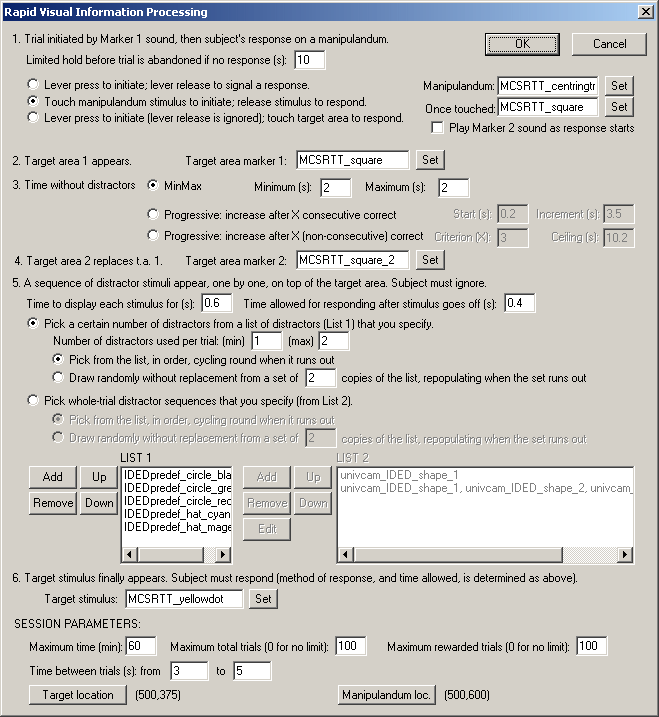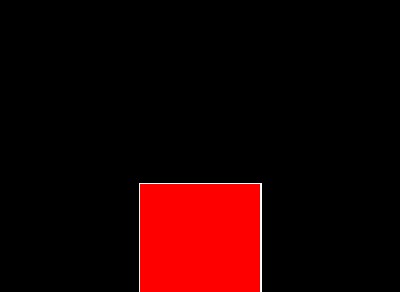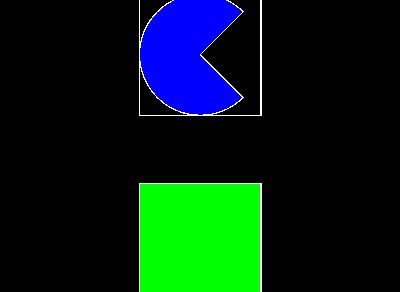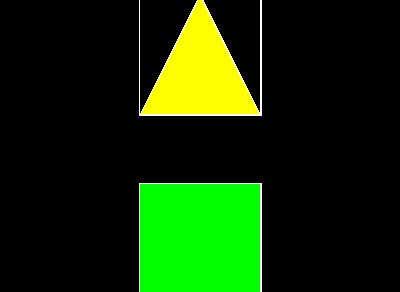Summary
Subjects must monitor the screen for a target stimulus, whilst ignoring distractor stimuli that may appear one by one in the meantime.
About the task
| • | Each trial begins with a Marker 1 sound. |
| • | The subject may initiate a trial (and subsequently respond) by pressing (and then releasing) a lever, or by touching (and later releasing) a stimulus on the screen, or by pressing a lever to initiate the trial and then touching the target to respond. |
| • | Following initiation, the target area appears on the screen. |
| • | After a configurable delay, stimuli start to appear in the target area. The subject must watch for the target stimulus. Before it appears, there is usually a series of distractor stimuli that must be ignored. |
| • | Success occurs when the subject responds to the target stimulus. Failure occurs when the subject fails to initiate the trial, fails to respond to the target, or responds early to one of the distractors. |
Visual appearance
| • | The visual manipulandum, if used, appears in the centre bottom position of the nine-way grid. |
| • | The target marker, distractors, and target appear in the centre top position of the nine-way grid. |
Configuring the task

| • | Limited hold before trial is abandoned if no response (s). Specify the time from the trial start before the trial is abandoned if the subject does not initiate. |
| • | Method of trial initiation and response. Options here are listed next. Additionally, the Marker 2 sound can be played when the subject initiates. |
| o | INITIATE with a lever press; RESPOND by releasing the lever. This option extends the lever (retracting it at the end of the trial) and does not involve a visual manipulandum on the touchscreen. |
| o | INITIATE by touching a visual manipulandum; RESPOND by releasing the same manipulandum. This option does not use the lever, but requires a visual manipulandum. Click the Set buttons to choose a visual stimulus for this (see Choosing Stimuli). The visual manipulandum changes once it is touched to the "manipulandum once touched" option (just supply the same stimulus in both boxes for nothing to change). |
| o | INITIATE by pressing a lever; RESPOND by touching the target area. This option does not require the visual manipulandum. The lever stays out for the whole trial (though responses on it after initiation are ignored). |
| • | Target area marker 1. Once the trial is initiated, the target area marker appears, and remains for the rest of the trial (except that Target Area Marker 1 is replaced by Target Area Marker 2 when the distractors start). |
| • | Time without distractors. After initiation, there is a pause before distractors start to appear. There are two possible methods for specifying the time without distractors: |
| o | MINMAX. Specify the minimum and maximum pause. The program picks a pause length at random within that range. |
| o | PROGRESSIVE - CONSECUTIVE. Specify the starting value, the increment, and the ceiling. The program adds the increment whenever the last X trials in a row have been correct (since the last increment). Specify also X, the criterion. |
| o | PROGRESSIVE - NONCONSECUTIVE. As for "progressive - consecutive" but allowing X non-consecutive correct responses since the last increment. |
| • | Target area marker 2. As above. |
| • | Time to display each stimulus. Each stimulus is displayed for a certain time, then goes off for a certain time (during which responses are still counted). Specify these times. |
| • | Sequence of distractors. There are two options. |
| o | LIST 1. In this method, you provide a list (List 1) of individual distractor stimuli, and tell the program (as a range) how many distractors to use per trial. The program either uses them in sequence or pseudorandomly as it needs distractors. |
| o | LIST 2. In this method, you specify a list (List 2) of SEQUENCES of distractor stimuli, one for each trial. In this method, the program may use your sequences sequentially or pseudorandomly, but it does not interfere with the sequence you specify within a given trial. The number of distractors on each trial is determined by the length of your sequence. Difficult tasks may be created this way (e.g. if your target is a yellow triangle, you could specify a list of distractors of green circle, green circle, green circle, green circle, yellow circle; this last distractor may cause premature responding as it shares its colour with the target). |
| o | Whichever method you use, you can have the program pick stimuli (List 1) or trials (List 2) from your list sequentially, cycling round to the start when the list runs out. Alternatively, you can put N copies of the relevant list into a big hat, shuffle everything in the hat, and then pick stimuli (List 1) or trials (List 2) from the hat until the hat is empty, before repeating the whole process. This process is called drawing without replacement, and the number N is something you can specify in the dialogue box ("... a set of N copies of the list..."). |
| • | Target stimulus. Specify the eventual target stimulus. It is displayed for the same time as the other stimuli (see above). |
| • | Maximum time / maximum total trials / maximum rewarded trials. I hope these are obvious. There are further limits available on rewards in the General Parameters. |
| • | Time between trials. Specify the minimum and maximum intertrial time. |
| • | Target location and Manipulandum location. Set the Locations used for the target and for the trial-initiation manipulandum. |
Screenshots
These screenshots don't use ideal stimuli! Anyway, they give a rough idea.
This example uses a visual manipulandum for initiation. Here it is, waiting for a response...

Now the subject has responded (and continues to touch the manipulandum, which has now turned green). A target marker has appeared at the top of the screen.

After a while, a distractor appears over the target marker...

... and vanishes again. This process might be repeated several times, until...

... the target appears.

If the subject doesn't respond to the target, it still has a little bit of time after the target disappears to respond.
